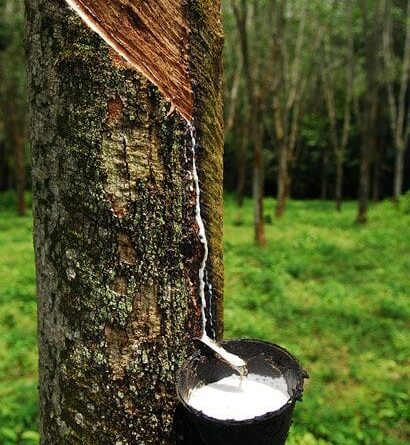Bangladesh Forest Research Institute (BFRI) introduces three high-yield rubber varieties
Dhaka, Bangladesh – The Bangladesh Forest Research Institute (BFRI) has introduced three groundbreaking rubber varieties—RM 001, RM 002, and RM 003—to address persistent challenges in the country’s rubber industry.
With locally cultivated rubber trees experiencing low latex yields, these varieties have the potential to transform commercial rubber farming in Bangladesh.
The genesis of this breakthrough lies in BFRI’s long-term mission to revive the dormant rubber industry. Cloned from high-yielding rubber trees in Malaysia, the newly developed varieties thrive in two soil types—sand and loam—and require minimal fertilization.
BFRI researchers project that these varieties will be more than three times as profitable as their domestic counterparts, providing a much-needed boost to the struggling rubber industry.
To facilitate widespread adoption, BFRI plans to establish a bud bank in Ramu, Cox’s Bazar, aiming to distribute seedlings to public and private rubber gardens across the country.
Dr Mahbubur Rahman, BFRI’s chief research officer, expresses optimism about the project, highlighting advanced development. After successful lab-stage work, the rubber trees are expected to go into production in three to four years, with superior growth compared to other varieties.
The development process involves collecting seeds from the Malaysian PB 350 rubber tree, meticulous tissue culture, successful bud grafting, and field-level research.
In terms of disease resistance and overall health, Dr Mahbubur Rahman reports no diseases found during field research, indicating robust and sustainable development. At one year, these rubber trees average 160 cm in height, with promising growth metrics for high latex yields.
Renowned forest researcher Prof Dr Aktar Hossain notes that combining indigenous and foreign characteristics, cloned varieties adapt quickly to local climates, potentially offering significantly enhanced latex yields. Anticipating three to four times more latex than current varieties, he foresees a transformative impact on the rubber industry over the next 10-15 years.
Kamal Hossain, a rubber farmer and Bangladesh Rubber Board member, emphasizes the outdated nature of current rubber varieties in Bangladesh. The recent awareness among rubber farmers regarding the development of three new varieties has reignited hope, with dreams of a revitalized industry upon successful commercial cultivation.
According to the Bangladesh Rubber Board, the country hosts 5,500 rubber plantations covering approximately 140,000 acres, sustaining around 80,23,000 rubber trees. The industry employs 56,000 people, contributing significantly to employment and production.
BFRI’s pioneering efforts in the rubber industry could extend beyond economic gains, promising contributions to the country’s GDP, employment opportunities, and positioning Bangladesh as a key player in the global rubber market.

